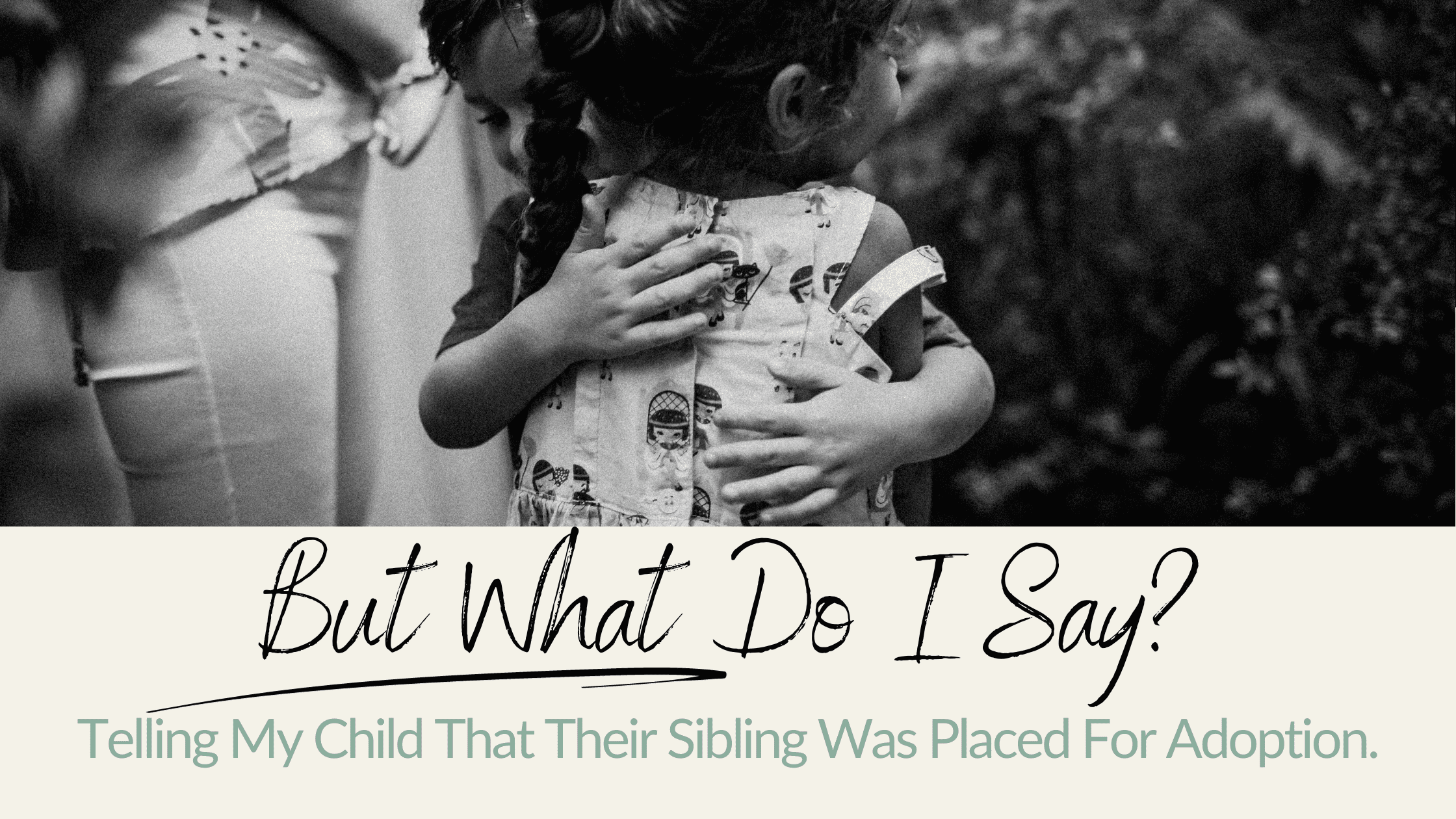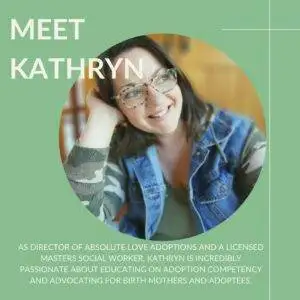Often parents placing children for adoption are parenting other children when making the adoption choice for their infants. Sometimes women placing children go on to have subsequent children. The impact of placing a child for adoption is not strictly on the birth mother and father. Rather, there is a ripple effect throughout the biological family. The siblings of the child placed for adoption are significantly impacted by the separation from their sibling.
Often birth families wish to support their child/children with understanding their decision to place another child for adoption. It is challenging to facilitate these conversations, and finding the right words and answering a child’s questions- regardless of their age- can be scary. As such, parents tend to avoid having any conversation at all. Parents should feel prepared and have resources to assist them, so we have prepared some suggestions below and linked some resources we feel may be helpful.
Things To Know:
1. It is not uncommon to work with birth parents who are hiding the unexpected pregnancy from the children they are parenting. It seems easier just to pretend it isn’t happening, whether for themselves or for their children’s sake. What we’ve learned is that while this is generally done to protect their family, the stress and preoccupation by the parents with regard to the pregnancy and the adoption process is felt by everyone in the home and support circle. Energy travels and is absorbed. Our suggestion is to share this experience with your children. It benefits them to know what is happening to their family. Sometimes children are old enough to notice Mommy’s growing belly and then it’s absence. Children are very observant. They understand far more than they can express with language.
2. Expect to feel afraid or uneasy. People shy away from things that hurt. This may hurt you to discuss the pregnancy or the baby, and it may make you nervous or afraid. Don’t avoid it because it is scary.
There is no right or wrong way to have this conversation. What is important is that you HAVE the conversation. So much of parenting and discussion about adoption is simply trial and error. It is willingness to try, fail and try again.
3. There is no “right time” to tell your child they have siblings. But as a rule, the sooner the better. In waiting to discuss something that is so significant, you send a message that there is something to be ashamed of. It may not feel urgent to have this conversation with a young child, but it’s important. You may be tempted to wait until they are “old enough to understand”. The longer you wait, the harder it gets. The older they are, the more shocking the revelation will be and the more opportunity for negative reaction. You may even find that day comes and goes and your children are grown before they stumble on their adopted sibling. When the big reveal does happen, your child may be resentful that you kept a secret that affects them for so long.
If you need support from your counselor, therapist or adoption caseworker, please ask! We are here to help you talk to your children about this topic, too.
4. Focus on using age appropriate communication. For a 2-year-old you aren’t going to launch into an elaborate explanation. They need basic information. They often work out their emotions and questions through play. Using toys to tell a story is a great tool.
For a 7-year-old, you can use some more language and they will likely have more questions. You’re going to meet them where they are developmentally. Their biggest concern will likely be if you will be separating from them as well.
A simple, basic explanation will do. If they ask questions, answer with short, direct communication. If they change the subject, trust that your explanation sufficed.
Some examples of things to say:
I grew your brother in my belly, just like I did for you.
The baby is your brother, but he has a different family than you. He lives with his mom and dad in a different house than us.
I wasn’t able to be a Mommy to another baby. His Mommy and Daddy will take care of him for us.
I made your brother, but I am not going to mother this baby like I mother you. Then maybe ask your child what a mother does and help them understand your role to them, versus your role to their sibling who was placed.
Reassure them saying, “You and me will always be together. I will always be your Mommy and the Mommy who takes care of you.”
Reassure your child that they can have a relationship with the child you placed, either now or in the future.
5. Not all children will respond the same way. Their reaction will have much to do with their own temperament and personality, your approach, their developmental age and ability and your response to them. Expect some degree of fear, anxiety or worry from your child as they process what this means for them, as in “Are you going to send me away, too?” Reassure them that you are parenting them forever.
Be honest, be open and encourage ongoing discussion. As their ability to understand develops, they may have more questions. Demonstrate ongoing openness about the topic.
The library is full of books about adoption that can be used to help your child understand adoption in general. Your agency may also have a lending library. Our agency purchases any resources requested by expectant or birth parents. Children who are given information about adoption can then incorporate this knowledge to help them develop their understanding of their sibling’s adoption and decide what significance this experience may have in their life.
Other resources:
https://www.adoptionchoicesofnevada.org/adoption-your-biological-children/
Books:
The Mulberry Bird: An Adoption Story by Anne Braff Brodzinsky
The Rainbow Egg by Linda Hendricks
Sam’s Sister by Juliet Bond
Beginnings: How Families Come to Be by Virginia Kroll





